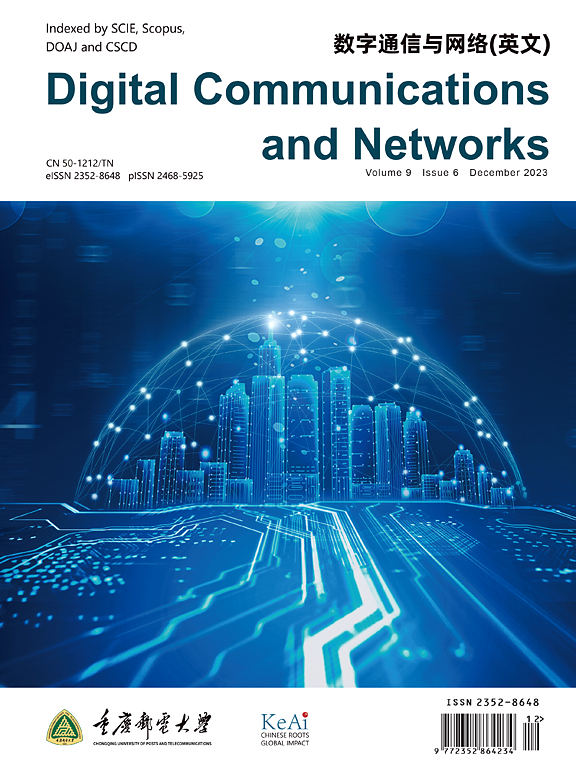A reconstruction and recovery network-based channel estimation in high-speed railway wireless communications
IF 7.5
2区 计算机科学
Q1 TELECOMMUNICATIONS
引用次数: 0
Abstract
The integration of high-speed railway communication systems with 5G technology is widely recognized as a significant development. Due to the considerable mobility of trains and the complex nature of the environment, the wireless channel exhibits non-stationary characteristics and fast time-varying characteristics, which presents significant hurdles in terms of channel estimation. In addition, the use of massive MIMO technology in the context of 5G networks also leads to an increase in the complexity of estimation. To address the aforementioned issues, this paper presents a novel approach for channel estimation in high mobility scenarios using a reconstruction and recovery network. In this method, the time-frequency response of the channel is considered as a two-dimensional image. The Fast Super-Resolution Convolution Neural Network (FSRCNN) is used to first reconstruct channel images. Next, the Denoising Convolution Neural Network (DnCNN) is applied to reduce the channel noise and improve the accuracy of channel estimation. Simulation results show that the accuracy of the channel estimation model surpasses that of the standard channel estimation method, while also exhibiting reduced algorithmic complexity.
基于重构恢复网络的高速铁路无线通信信道估计
高速铁路通信系统与5G技术的融合被广泛认为是一项重大发展。由于列车具有相当大的移动性和环境的复杂性,无线信道具有非平稳特性和快速时变特性,这在信道估计方面存在重大障碍。此外,在5G网络背景下大规模MIMO技术的使用也导致了估计复杂性的增加。为了解决上述问题,本文提出了一种利用重建和恢复网络进行高移动性场景下信道估计的新方法。在该方法中,信道的时频响应被视为二维图像。首先利用快速超分辨率卷积神经网络(FSRCNN)对通道图像进行重构。其次,采用去噪卷积神经网络(DnCNN)来降低信道噪声,提高信道估计的精度。仿真结果表明,该信道估计模型的精度优于标准信道估计方法,同时降低了算法复杂度。
本文章由计算机程序翻译,如有差异,请以英文原文为准。
求助全文
约1分钟内获得全文
求助全文
来源期刊

Digital Communications and Networks
Computer Science-Hardware and Architecture
CiteScore
12.80
自引率
5.10%
发文量
915
审稿时长
30 weeks
期刊介绍:
Digital Communications and Networks is a prestigious journal that emphasizes on communication systems and networks. We publish only top-notch original articles and authoritative reviews, which undergo rigorous peer-review. We are proud to announce that all our articles are fully Open Access and can be accessed on ScienceDirect. Our journal is recognized and indexed by eminent databases such as the Science Citation Index Expanded (SCIE) and Scopus.
In addition to regular articles, we may also consider exceptional conference papers that have been significantly expanded. Furthermore, we periodically release special issues that focus on specific aspects of the field.
In conclusion, Digital Communications and Networks is a leading journal that guarantees exceptional quality and accessibility for researchers and scholars in the field of communication systems and networks.
 求助内容:
求助内容: 应助结果提醒方式:
应助结果提醒方式:


